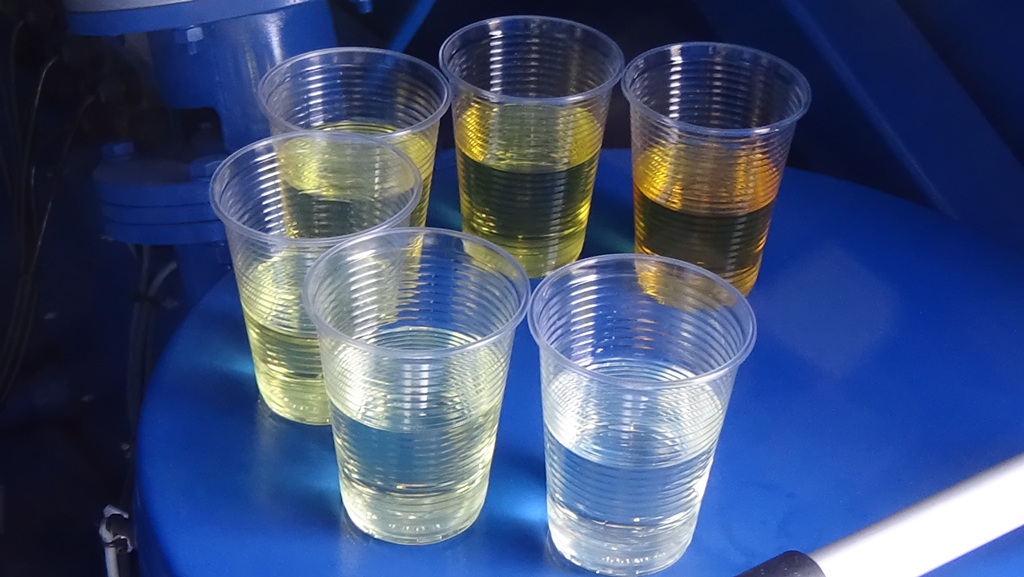Transformer oil today is the most widely used dielectric in electrical equipment.
The main function of this oil is electrical insulation and dissipation of heat from transformer core, as well as insulation of cables and capacitors.
The dielectric strength of insulation oil is defined by the chemical composition of the oil and the presence of contaminants. If the oil is thoroughly purified, the breakthrough might occur mostly due to molecule ionization. A breakthrough leads to sharp current increase.
Beside particulate matter, other factors which reduced dielectric strength of oil are moisture and gas. Small droplets of water cause the most damage. They distribute evenly throughout the volume of oil, but do not mix with it, forming an emulsion.
Since water is a polar liquid while oil is by nature neutral, application of current leads to formation of dipoles and a channel with high conductivity in the oil. This is where breakthrough occurs. Even 0.01% of moisture can reduce the oil’s dielectric strength almost three times.
The dielectric strength of gases is less than that of liquid dielectric, so ionization occurs rapidly in gas bubbles. The bubbles enlarge, facilitating local overheating of oil. A gas channel forms where breakthrough occurs.
How to increase the dielectric strength of oil? This requires drying, degassing and removal of particulate matter using special GlobeCore equipment. GlobeCore unit operation is based on various effects and their combinations, which allows to always select the optimal solution to increase the dielectric strength of transformer oil.

